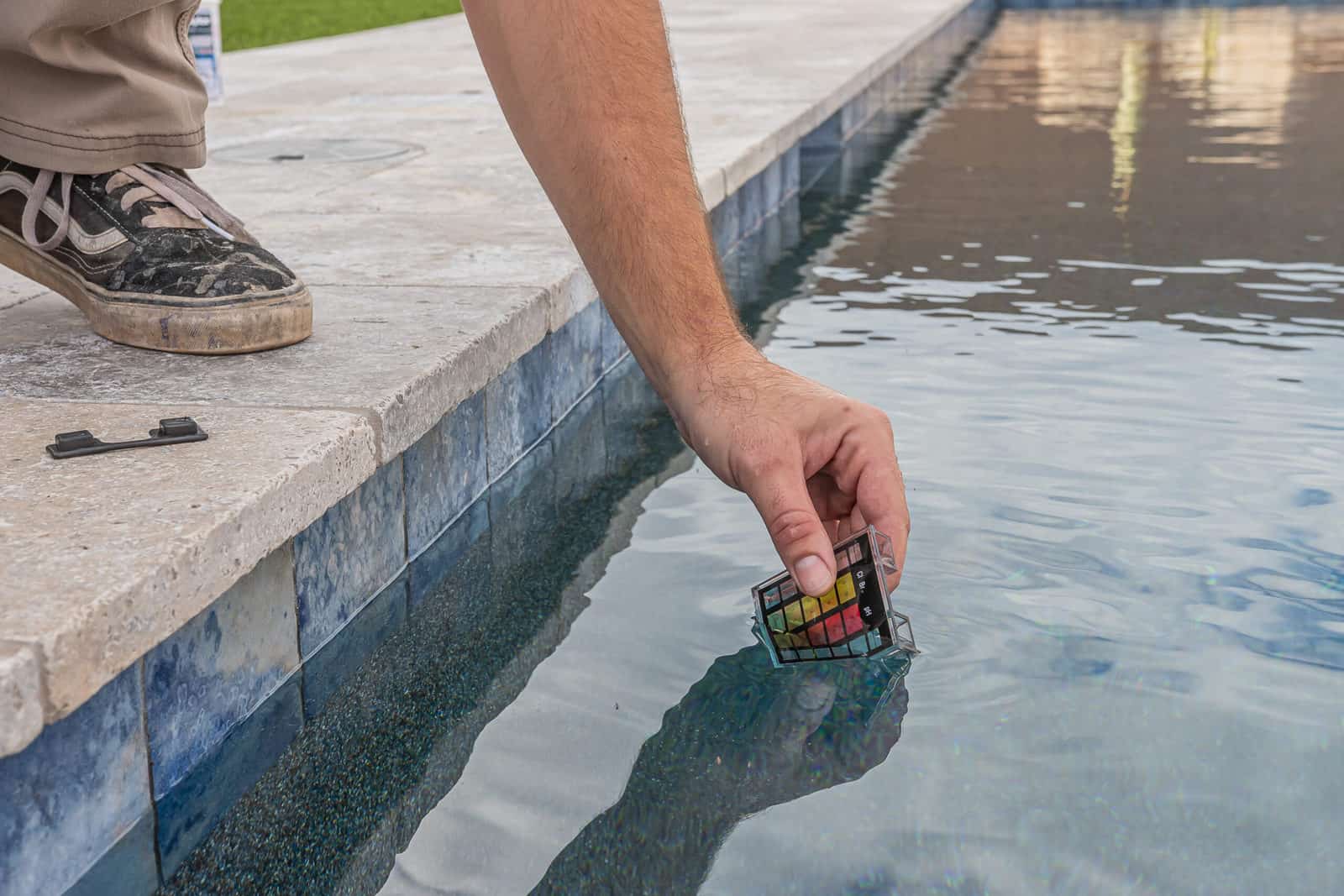

Your pool chemistry is constantly changing due to a variety of reasons ranging from weather and temperature changes, to usage levels, to what swimmers may have on their skin. When it comes to maintaining a pool, there are five critical factors that affect pool chemistry and must be kept in balance in order to maintain clean and crystal clear pool waters:
The pH level of your pool is the single most important factor when it comes to your pool chemistry. Without the right pH levels, the effectiveness of every other chemical in the pool will be thrown off and be rendered ineffective.
Though closely associated with a pool’s pH levels, total alkalinity (TA) measures your pool’s hydrogen ion concentration and indicates your water’s ability to neutralize hydrogen loss. Translation: having a balanced TA helps keep your pH level in check by preventing it from going out of control should acid or alkali be introduced to your pool.
A pool’s calcium hardness will measure the levels of dissolved calcium salts in your water. Though usually the least problematic, having a calcium hardness that’s too low can lead to pitting in you pool’s plaster or high calcium can cause cloudy water and scaling.
Also known as “TDS”, total dissolved solids often accumulate after the pool’s been in use for a long period of time. This often includes unfilterable solid waste such as suntan lotion, chlorines, algaecide, dirt, and more.
Pool owners will have a far easier time maintaining a pool and appropriate chlorine levels when all of the above pool chemistry factors are balanced. This chemical is used to disinfect pool waters and has variable ideal levels depending on what you’re testing.
Shasta Pools is a Phoenix pool builder who provides a variety of services including swimming pool remodeling, commercial pool building, and pool service and repair. Since its establishment in 1967, Shasta has helped over 80,000 families realize their dream of pool ownership. By providing exceptional value, quality craftsmanship and superior customer service, the Shasta team continues to fulfill the corporate mission of astonishing and delighting their customers and exceeding expectations. You can learn more about Shasta Pools & Spas by visiting them online, or by connecting with them on Facebook or Twitter.